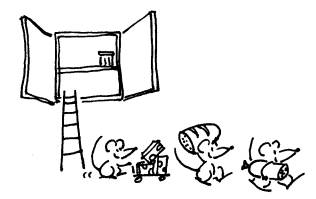
The uncertainty relations are the mathematical expression of a limitation encountered when dealing with incompatible observables. To see what it means for two observables to be incompatible, let us first consider two observables A and B separately. A system can always be prepared (at least in principle) in such a way that by repeating several times the sequence ‘preparation P + measurement of A', one always gets the same value ai (one says in this case that to the preparation P corresponds a probability 1 to find ai if A is measured). Analogously, one can prepare a system in such a way that the probability to get bi in a measurement of B is 1. If the two observables are incompatible, however, it is impossible to find a preparation procedure such that a joint measurement of A and B yields ai and bi with probability 1. In other words, the measurements of A and B look as if they were not independent (as if they ‘interfered' with each other).
This fact is related to the geometrical relation existing between the structures that represent incompatible observables in the state space. A simple illustration is provided by the case of two spin components Sz and Sx. Consider the toy model discussed in the section on the superposition principle: it is clear that no state vector can associate probability 1 to anyone of the following results: ![]() &
& ![]() ,
, ![]() &
& ![]() ,
, ![]() &
& ![]() ,
, ![]() &
& ![]() . (This is because the axis representing Sx and the axis representing Sz in the state space are neither parallel nor orthogonal.)
. (This is because the axis representing Sx and the axis representing Sz in the state space are neither parallel nor orthogonal.)
Generalising this kind of argument, and using the formalism of Hilbert spaces, one can demonstrate that position and momentum, being incompatible observables with a continuous spectrum of outcomes, must obey inequality (1).


